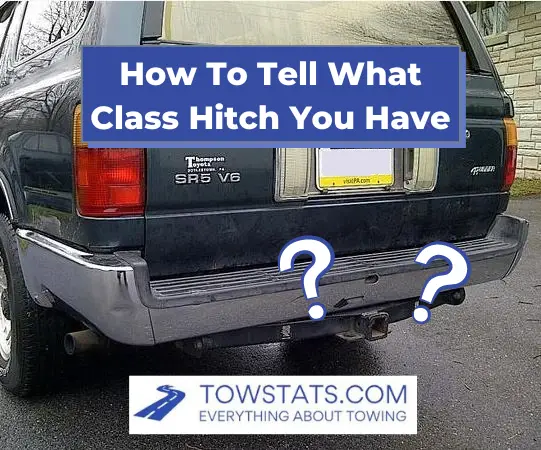Do you have a hitch on your vehicle and are not sure what class it is? Knowing how to tell what class hitch you have on your vehicle doesn’t have to be a frustrating process.
In this guide, we’ll provide a few easy ways to determine your vehicle’s hitch rating along with some helpful tips along the way.
How To Tell What Class Hitch I Have
There are 5 different trailer hitch classes to choose from.
Finding out what class hitch you have is extremely important, as that will guide you on knowing how much weight you can tow and what kind of accessories are compatible with your hitch.
There are 5 ways to find out what hitch class is on your vehicle:
- Look at the label on your hitch
- Find out the towing capacity of your vehicle
- Measure the receiver opening on your hitch
- What kind of vehicle you have
- Contact the manufacturer
Look At Your Hitch Label To Find The Hitch Class
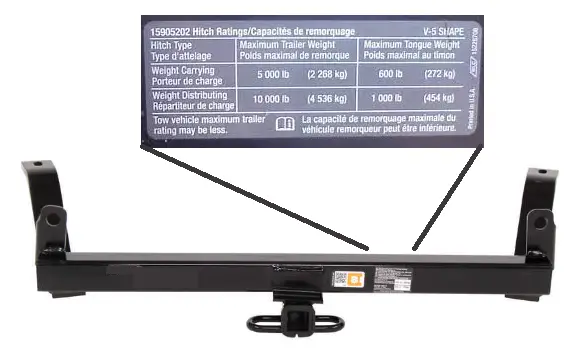
Every receiver hitch comes with a label on it that has critical information about the hitch.
You will usually see the following values on your hitch label:
Maximum Weight Carrying (MWC): This is the maximum trailer weight you can tow when you are using a standard shank and tow ball with the receiver hitch on your vehicle.
Gross Trailer Weight (GTW): This is the entire weight of the trailer, cargo, and any fuel or water you have in the trailer.
Maximum Tongue Load Weight Carrying (Maximum TW): This is the maximum tongue weight the hitch is capable of bearing.
The max tongue weight is usually around 10-15% of the maximum carrying weight of the hitch.
Maximum Weight Distributing (MWD): This is the maximum trailer weight you can tow when you are using a weight distribution hitch along with the receiver hitch on your vehicle.
These values will help us in determining which class hitch is on your vehicle.
Using Hitch Label Values To Find Out Your Hitch Class
Look at the weight capacity (MWC) value on the label of your hitch and match it up to the values below:
- Class 1: GTW up to 2,000 lbs, Maximum TW 200 lbs
- Class 2: GTW up to 3,500 lbs, Maximum TW 300 lbs
- Class 3: GTW Up to 8,000 lbs, Maximum TW 800 lbs
- Class 4: GTW Up to 12,000 lbs, Maximum TW 1,200 lbs
- Class 5: GTW Up to 25,000 lbs, Maximum TW 2,500 lbs
If Your Label Has A Maximum Weight Distributing (MWD) Value On It
Weight distribution hitches require a receiver opening of 2″, which are only found on Class 3, 4, and 5 hitches.
So if your hitch label has a MWD value listed on it, you automatically know that you have at least a Class 3 hitch.
The Towing Capacity Of Your Vehicle
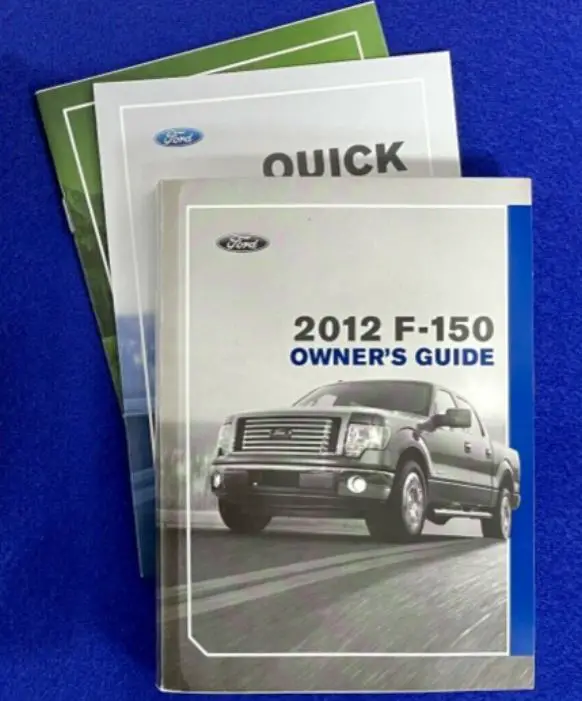
Nearly all hitches installed on vehicles will have a lower hitch towing capacity than the actual vehicle’s towing capacity.
Look in your vehicle’s user manual for the suggested towing capacity, and use the following values to find out which hitch class you have:
- Up to 2,000 lbs: Class 1 Hitch
- 2,001-3,500 lbs: Class 2 Hitch
- 3,501-8,000 lbs: Class 3 Hitch
- 8,001-12,000 lbs: Class 4 Hitch
- 12,001-25,000 lbs: Class 5 Hitch
If your vehicle came with a factory-installed hitch on it, you can rely on this method with confidence.
If you got your vehicle with an aftermarket hitch installed on it, you have no idea if the class of the installed hitch was properly matched to the vehicle or not.
Measure Your Receiver Opening
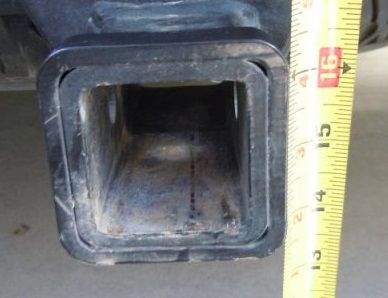
Measuring the opening on your receiver hitch will help you narrow down what class hitch is on your vehicle.
Certain hitch classes have specific opening sizes, which will give you some clues and help you to identify your hitch class.
Take a tape measure or ruler and measure from inside opening to inside opening of the receiver hole.
The hole is square, so you will get the same measurement horizontally and vertically.
Match those measurements up to the values below:
- Class 1 & 2: 1.25″ x 1.25″
- Class 3 & 4: 2″ x 2″
- Class 5: 2-1/2″ x 2-1/2″ or 3″ x 3″
What Kind Of Vehicle You Have
While this is the least reliable way of telling what class hitch you have, at least it’s a start.
As we discussed earlier, there are specific hitch classes for different types of vehicles.
At the very least, everyone can look at their vehicle and see if it’s a car, van, SUV, truck, etc. .
Take a look below to help narrow down the type of hitch class your vehicle has:
- Class 1 & 2 Hitches: Small Cars, Hatchbacks, Minivans, Small 2-Door Cars, Crossovers, Small SUVs
- Class 3 & 4 Hitches: Large Sedans, Midsize and Large SUVs, Pickup Trucks
- Class 5 Hitches: Heavy Duty Full Sized Trucks & Commercial Vehicles
Contact The Manufacturer

If you happen to know the model number or can make out a serial number etched into your hitch, you can reach out to the hitch manufacturer with that information by phone or email.
They should be able to tell you what class of hitch is on your vehicle, as well as plenty of other useful information about it.
How To Tell Between A Class 1 Vs Class 2 Hitch
Sometimes you may have a 1-1/4″ receiver opening found on Class 1 & 2 hitches, but the accessories won’t fit.
This is because Class 2 hitches accept longer shanks than Class 1 hitches do.
Since they have the same opening size, manufacturers put a stopper tab on the end of the hitch opening to prevent you from overloading your Class 1 hitch.
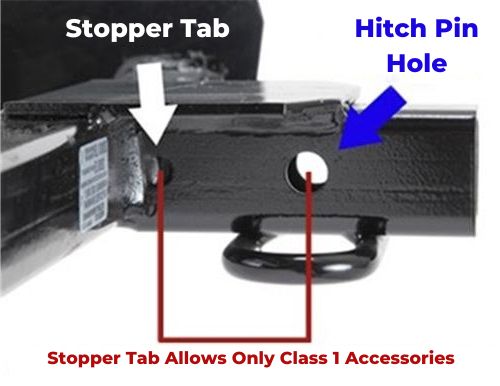
Class 1 hitches are the lowest rated for weight, so the manufacturer is ensuring you avoid damage from Class 2 accessories and the load you’ll put on them.
So if you have a small car, SUV, or van and your receiver hitch has a tab or stopper on it, then you can be certain that yours is a Class 1 hitch.
How To Find Out What Class Hitch You Have: Wrapping Things Up
Now that you know the different ways to find out what class hitch you have, it’s time to put that knowledge to good use.
Whether you’re shopping for new hitch accessories or trying to figure out if your vehicle is able to tow a certain load, this guide will come in handy.
Remember, the best way to find out for sure what class hitch you have is by measuring the receiver opening or contacting the manufacturer.
Other than that, look at your vehicle type and compare it to the chart of recommended hitches for each type of vehicle.
Doing all of these things should give you a pretty good idea of which hitch class is on your car, SUV, truck, or van.
Got any other trusted methods you use that we didn’t cover here? Please share them with everyone in the comments below!

